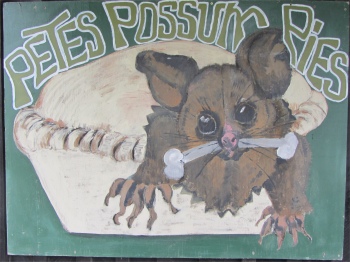 Pete's Possum Pies at Puke Cafe |
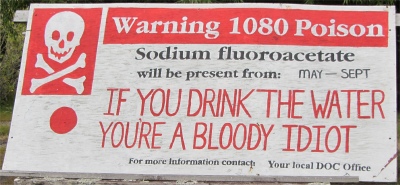 They Have a Thing About 1080 Down Here |
My route headed north, the road staying close to the slopes of the Southern Alps. I passed through miniscule Harihari 81 years too late. It was in the La Fontaine swamp near here where Guy Menzies crash-landed in 1931, after completing the first solo-flight from Sydney to New Zealand.
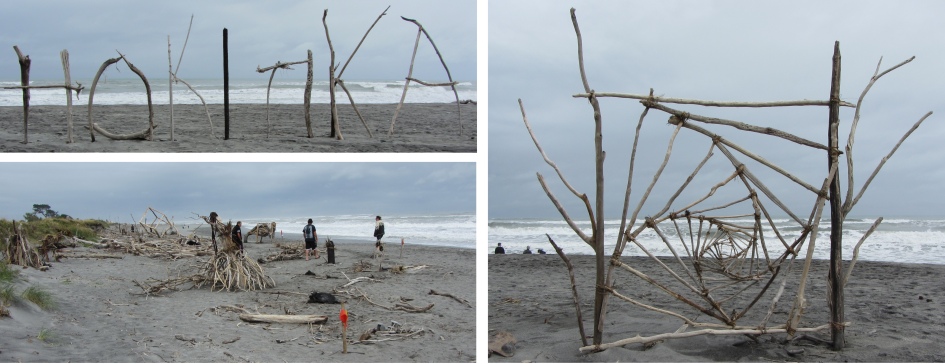 Hokitika Driftwood Sculptures |
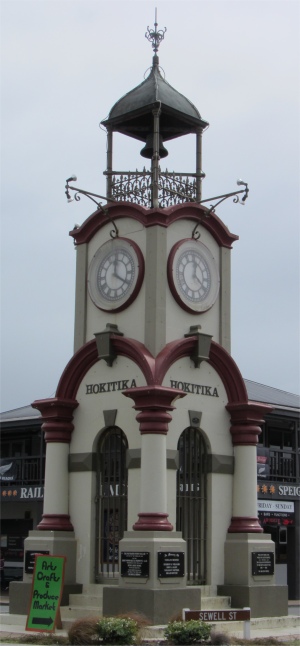 Hokitika Clock Tower |
Skimming the coast, I coasted (excuse the pun) through the tiny village of Ross, where in 1907, a couple of prospectors uncovered the largest gold nugget ever found in the country, the 2.97kg "Honourable Roddy". The government gave it to George V as a coronation gift, who in turn melted it down to make tableware.
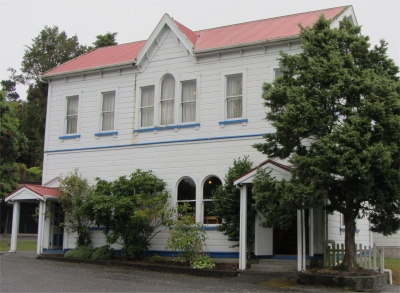 Shantytown's Coronation Hall |
Maori named the entire South Island Te Wahi Pounamu, "the place of the greenstone". A coastal greenstone field lay between Greymouth and Anita Bay on Milford Sound. Greenstone was the collective name for pounamu (hard nephrite jade) and tangiwai (softer, translucent bowenite). Prior to the Europeans, the Maori highly prized greenstone, and used it for warfaring purposes and jewellery. Today, greenstone was still as prized, and was big business in this greenstone centre. $100,000 per tonne was a typical going rate, and illegal extraction attracted astronomical fines plus gaol sentences.
I walked down to the old quay where hundreds of ships had once lined up bringing imports into the west coast and gold was exported. A nasty bar outside the harbour had sunk 48 ships since the gold rush era began. Today there was nothing to indicate the once hectic scene of activity that took place here.
I strolled back along the beach, admiring a series of sculptures made out of tortured driftwood that lined the top of the shingle. As far as I could tell it was all part of a competition. Nearby, kids were invited to make penguin houses out of smaller pieces of driftwood and reeds.
The tranquillity of this impromptu sculpture park was destroyed by the thunderous roar of the big breakers threatening to engulf these flimsy constructions and wash them out to sea.
Around 10km south of Greymouth, the faithfully recreated pioneer gold-mining town of the 1860s, Shantytown, was a heritage attraction taking visitors back in time to a very different slice of New Zealand life. Replica buildings included shops, post office, pub, gaol, timber mill, a working steam train, and Rosie's House of Ill Repute, plus gold panning opportunities. Just like the Taranaki Pioneer Village I had visited in Stratford, many of the buildings were original had been relocated to the site.
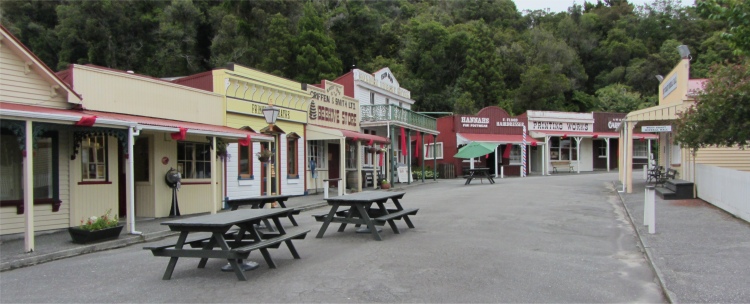 A Shantytown Street |
I love recreations such as this, but in my mind they always work best when they have folk acting out the parts of the age they are representing, similar to the setup at the Beamish Museum in northeast England. I appreciate that unless the folk are volunteers, the extra expense my put it out of the question.
I dodged the rain the best I could, while the weka birds running about my feet couldn't care less.
My journey continued to track the coast up to Westland's geographic and commercial heart, Greymouth. I drove into a site near the town centre that was for motorhomes, in fact it was just an asphalt covered area behind a garage, with an array of enormous motorhomes already lounging around, and about fifty used cars for sale. I spotted the caretaker, and tried the same ploy as I did at Wellington, where I was flatly ejected. "I know this is for motorhomes," I said, "but I have a car with a motor in it, and it is also my home. Would you classify that as a motorhome?" I asked the man, expecting a negative response. "No problem," said the man, holding out his hand, "my name is Jim." We shook hands and got on quite well. I told him I was visiting this part of Westland because of its mining history, and he told me that his father had been a coal miner here. I was in his good books. "What time do I have to check out by?" I asked. "Oh, don't worry, just come and go as you please," he replied. What a kind chap.
